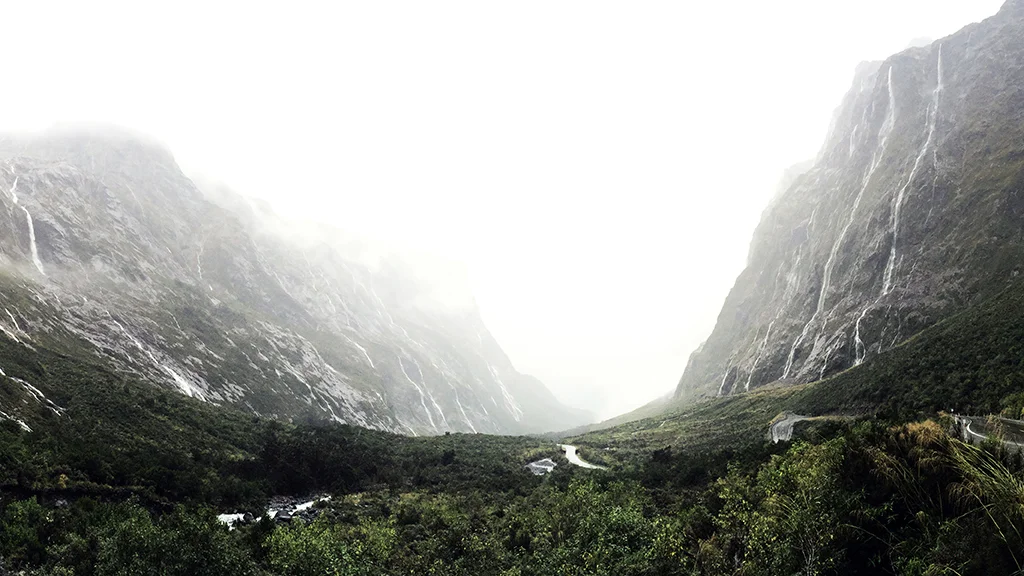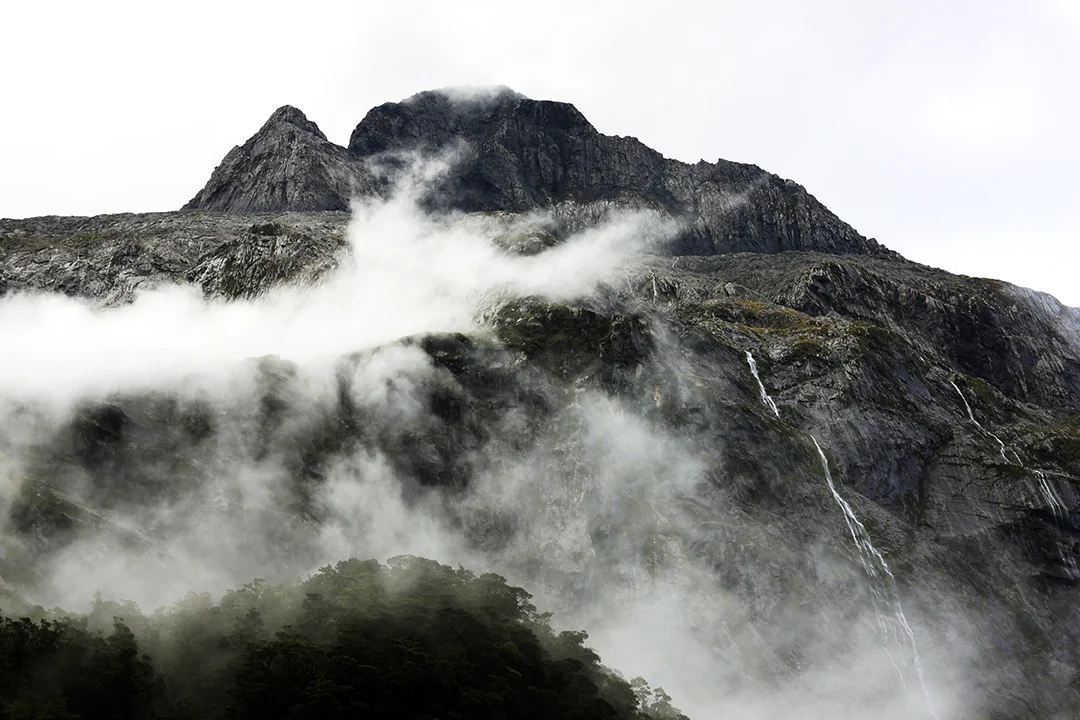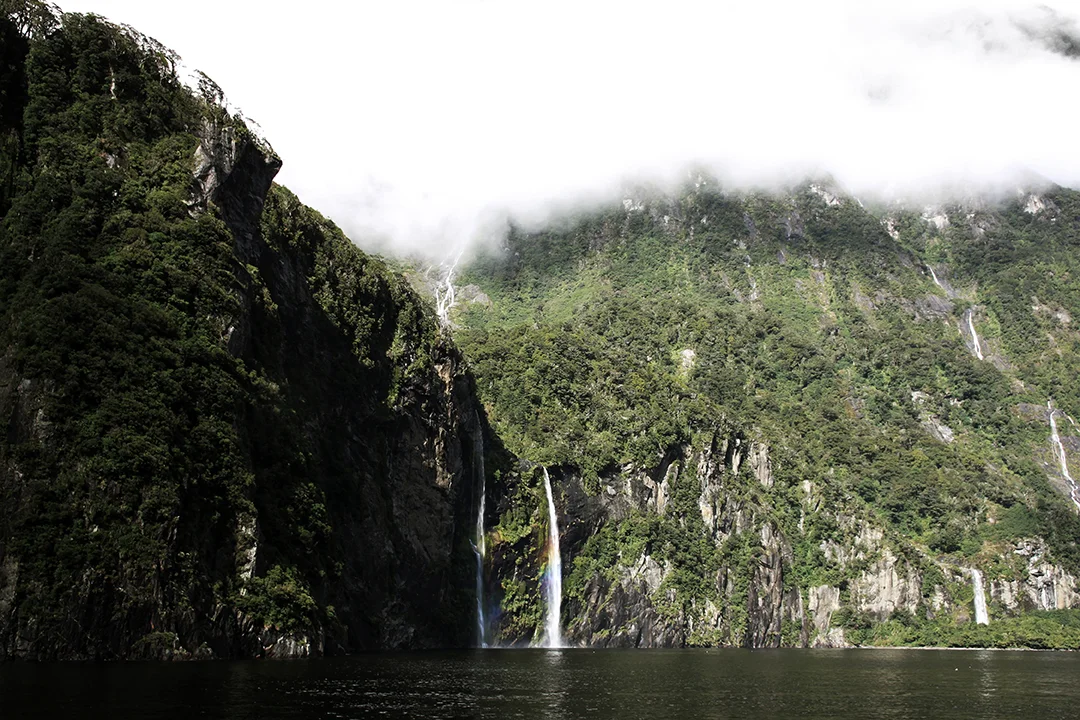Milford Sound, South Island, New Zealand
February 2015
There had always been a list. But most of our itinerary consisted of directions and paths rather than specific destinations. Our first few weeks and the subsequent trips taken once settled in Dunedin had, for the most part, been attempts at exploration rather than goal achieving and I think we both liked it better that way. Nevertheless, there stood quite tall one very specific destination: Milford Sound. Milford Sound had become our white whale. In our previous trip taken in 2009, Milford had been our final target as it lies low on the west coast of the southern island. Three times we made attempts to get there, all of which were foiled by winter weather affecting the one and only road that leads to it. Alas, we were forced to leave without ever seeing what had transcended into folklore fiords. But this time around, we wouldn’t rest until all had been conquered. So February came and with it late summer and not only had we a plan to go to Milford Sound, but Adam, my big brother, had actually decided to visit as well.
It’s hard to say what exactly made this trip the most special to me in our seven months of being in New Zealand. Probably because it was the combination of a large number of small things. Some of which include: the six year wait we were forced to endure, the wet and cloudy weather broken just at the right times by sun, being able to share it with Marielle by my side, and having the added company of my big brother—an occurrence more rare than it should be for two brothers. But it is true. Milford was something special and will remain so. Never before had I seen much less imagined such a place could exist in this world. And if there’s anything that I came away with from our time in New Zealand it’s that it's a land that likes to surprise.
Milford Sound, or Piopiotahi in Maori, may be the most prized among many New Zealand jewels. It is one of the best examples of a fiord, it's located in the Fiordland National Park, and it’s New Zealand’s most visited site. Fiordlands are a rare geographical feature mainly found close to the arctic circle (i.e. Canada, Greenland, Norway, and so on). New Zealand and Chile are the only places you can find them in the southern hemisphere. Reason being, Fiordlands are specific in that they’re glacially carved ‘U’ shaped valleys that are then filled in after rising sea levels. Think Yosemite, but halfway submerged in the Pacific Ocean. And because the glaciers recede faster than the sea level rises the valley floor can be substantially deeper than the sea level just beyond the coast's edge. This is all another way of saying: they’re giant valleys filled with seawater, thereby combining towering mountain tops, countless waterfalls, gravity defying vegetation, and placid ocean waters that seem more like lakes. It instills a severe sense of a prehistoric world.
Particular to Milford, it is accessed by only one road: highway ninety-four. The drive is nearly as beautiful as the destination and something that should be given its due time. Marielle, Adam, and I left from Dunedin on a Friday evening to arrive in Te Anau by night. We made our way to Milford slowly the following morning with stops and hikes along the way. Once in Milford Sound itself there are actually no day hikes. Rather, many are located along the drive and just before entering Homer Tunnel. Most hikes near Milford are Great Walks such as Milford Track or Routeburn Track. Some day hikes, accessed from just off the road follow these walks, but then veer off in one direction or the other. The drive takes you through valleys and forests before ascending slowly into the mountains—passing lakes and along rivers. This natural route between the Darran Mountain range is only inhibited by a major saddle blocking your eventual descent back down to sea level and Milford Sound. Enter Homer Tunnel. Homer Tunnel passes through the saddle, connecting Te Anau and Milford by way of an unlined granite hole wide enough for one lane of traffic at a time, three quarters of a mile long, and graded at a slope to lower your elevation by over four hundred feet upon exiting. It’s a dark hole lit only by headlights and the occasion emergency lamps on the walls. You can feel yourself descending, but with no horizon as a point of reference you feel more like gravity is just playing games with you. Once out you come upon a expansive valley riddled with waterfalls caused by the seemingly constant amount of rain the Fiordland gets year round. It felt like a land created on a greater scale than the rest of the earth and contains a beauty to match.
Once at Milford Sound proper, some short walks around the water’s edge and near some neighboring waterfalls are a must. But to explore the sounds itself, water becomes the necessary mode of transportation. Kayaking can be done and often in group tours, though the most common vessel are ferries available in a wide range of options. We took a smaller ferry out in the morning that leaves from the port, travels out to the mouth of the fiord and back in again, hugging the respective sides of the mountain faces in each direction. Only two waterfalls exist year round, but after days of rain seemingly hundreds were descending down to fall into the sea, all special in their own way. After the years of waiting, I was in no way disappointed. Though I had an idea of what was to come when planning this trip, nothing prepared me for the sheer grandness and fantasy that existed. And I liked it better that way.















